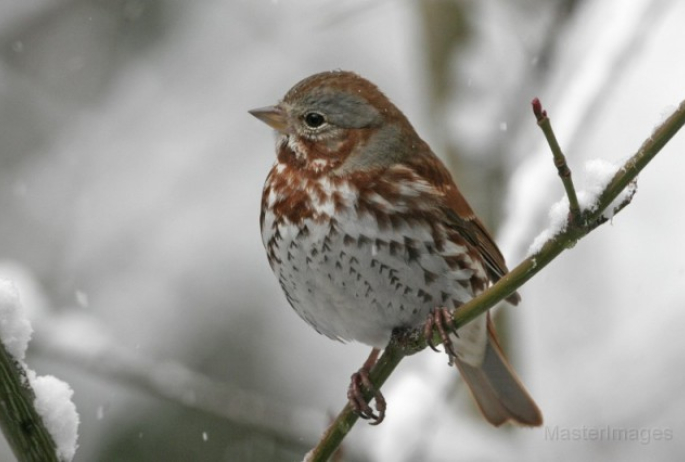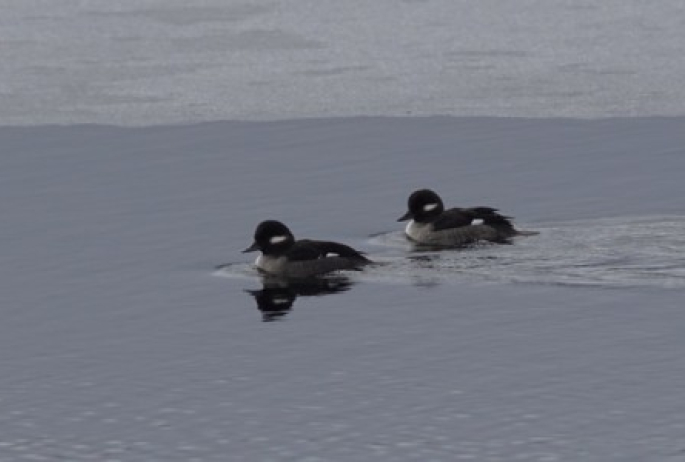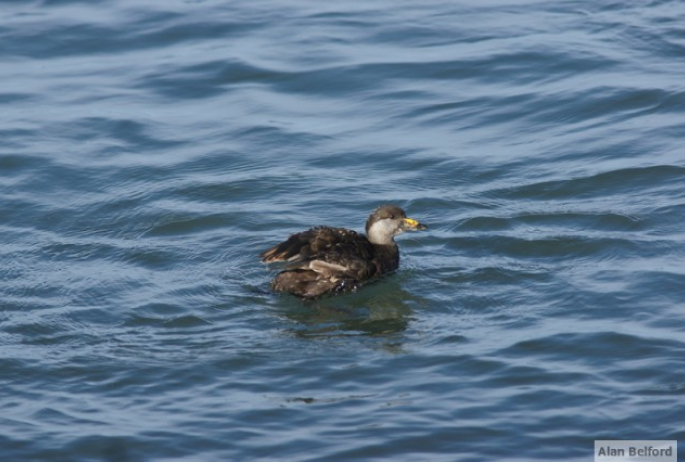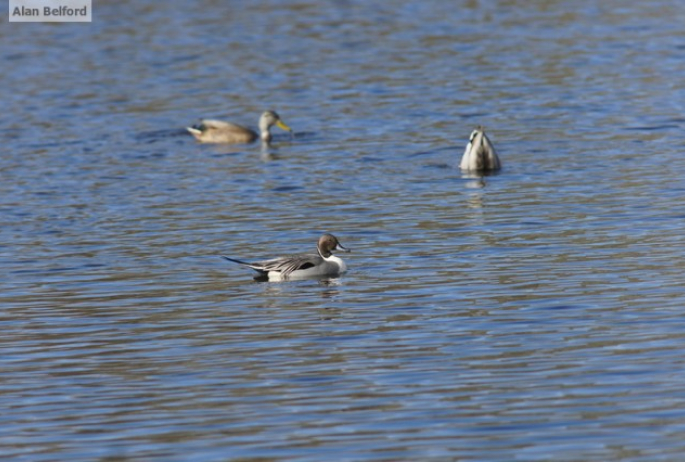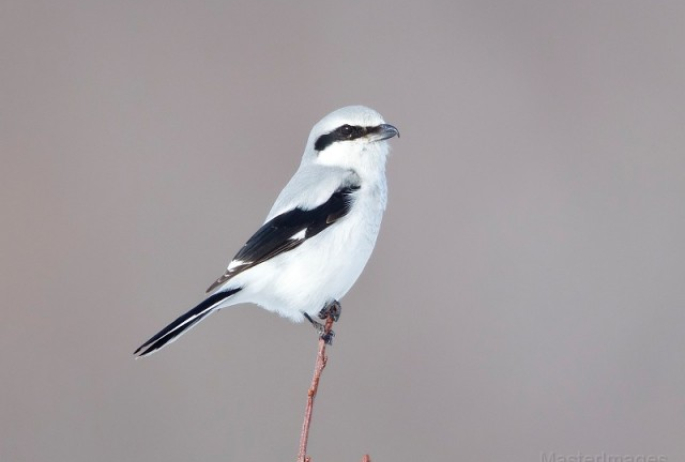Birds on the Mind
While a certain bird was on the minds of most people last month with the Thanksgiving holiday, Wren and I were out each day trying our luck to see what other birds we could find. With the recent cold front bringing snow and north winds, I was hoping it would reverse our fortunes of the previous week when warm air from the south stopped many things – particularly waterfowl - from migrating.
The benefit of the warm air was that it kept the continuing Fox Sparrows at my bird feeders for longer – waiting until favorable conditions before they moved on. The last of my Fox Sparrows was soon gone with the front but I managed to keep a few White-throated Sparrows, a bunch of Dark-eyed Juncos, and a few arriving American Tree Sparrows. The snowstorm also pushed in a few birds to my feeders – first a very late Common Grackle and then a late Red-winged Blackbird. Two days later I spotted a Rusty Blackbird at my feeders as well as another Fox Sparrow – it seems more still needed to move through.
Migrating Waterfowl
The same was true of the waterfowl on nearby lakes – my favorite of which is Lake Colby in Saranac Lake. There hadn’t been any ducks for about a week and once the front passed through I began to pick up a few Bufflehead. That was the case the day before Thanksgiving when Wren and I walked out the railroad tracks and spotted two female Bufflehead forced fairly close to the tracks because the backside of the lake was starting to freeze.

But I soon realized the Bufflehead weren’t the only ducks on the lake. The main body of the lake was still free of ice and I noticed two Black Scoters on it – a species we don’t see too often in the middle of the Adirondacks. Soon a large flock of Canada Geese flew overhead and I looked through them to see if I could spot anything out of the ordinary, finding nothing of note. But I did hear the loud quack of a Mallard and soon saw a small group of them along the tracks which included an American Black Duck.

Wanting to investigate further, Wren and I broke a trail through the deep snow to see what else might be in the small cluster of ducks when to my surprise a seemingly growing flock began to move away from the railroad tracks as we approached. It turns out there were better than 40 Mallards, and close to 15 American Black Ducks and a few Hooded Mergansers in the mix. Far more exciting than these usual species were the 3 American Wigeon, 6 Northern Pintail, and the lone Green-winged Teal with them. While none of these latter species are rare, they can be hard to come by in the middle of the mountains, and I had never seen a Teal or Pintail previously at Lake Colby. I picked through the flock to make sure there were no other surprise goodies in the convoy before I finally acquiesced to the time of day and the need to do some work.
Return Trips
That afternoon I returned with my scope to see if could find anything else. But the large flock of ducks was gone – only the Bufflehead, Scoters, and a couple Common Loons remained. It shows just how quickly things can change during the late-fall season. That flock may have only been there for the night or maybe even for a couple hours, and I was just lucky enough to find it. The same may have been true of the Northern Shrike which I spotted searching for prey that afternoon along the tracks near Hulbert Supply – I hadn’t seen it in the morning.
On this second trip of the day Wren and trudged further through the snow – I wanted to be sure the large raft of ducks was gone. I did find a bunch more Hooded Mergansers and Bufflehead on the western arm of the lake as well are our first Common Goldeneye of the day, but the Mallards, Black Ducks, Wigeon, Pintail, and Teal had all taken off for warmer climes. That’s just how birding goes sometimes.

On a cool morning we returned and found a few Bufflehead and Hooded Mergansers – two of the most common species I note at Colby in the fall. We also checked out Lake Clear Beach where there were small clusters of Hooded Mergs and Common Goldeneye. In the days since their numbers have dropped but there will be more coming south on the next cold front.
And that’s the best thing about fall and its cold fronts – they push birds into and through our region and you don’t know what you might find each time you’re out. It also means that you have to get out as often as you can or the flock of ducks or the Northern Shrike will have to be found by someone else – or perhaps by no one at all. It is this uncertainty of success and hope for the unexpected that makes birding so much fun, after all. And so as our temps drop and the lakes freeze along the edges, Wren and I will be out there looking – in anticipation of something unpredictable.
Late fall and winter are great times to plan your outdoor recreation and birding trips to the region. Check out our lodging and dining pages to plan how to stay warm and well fed while you explore!






